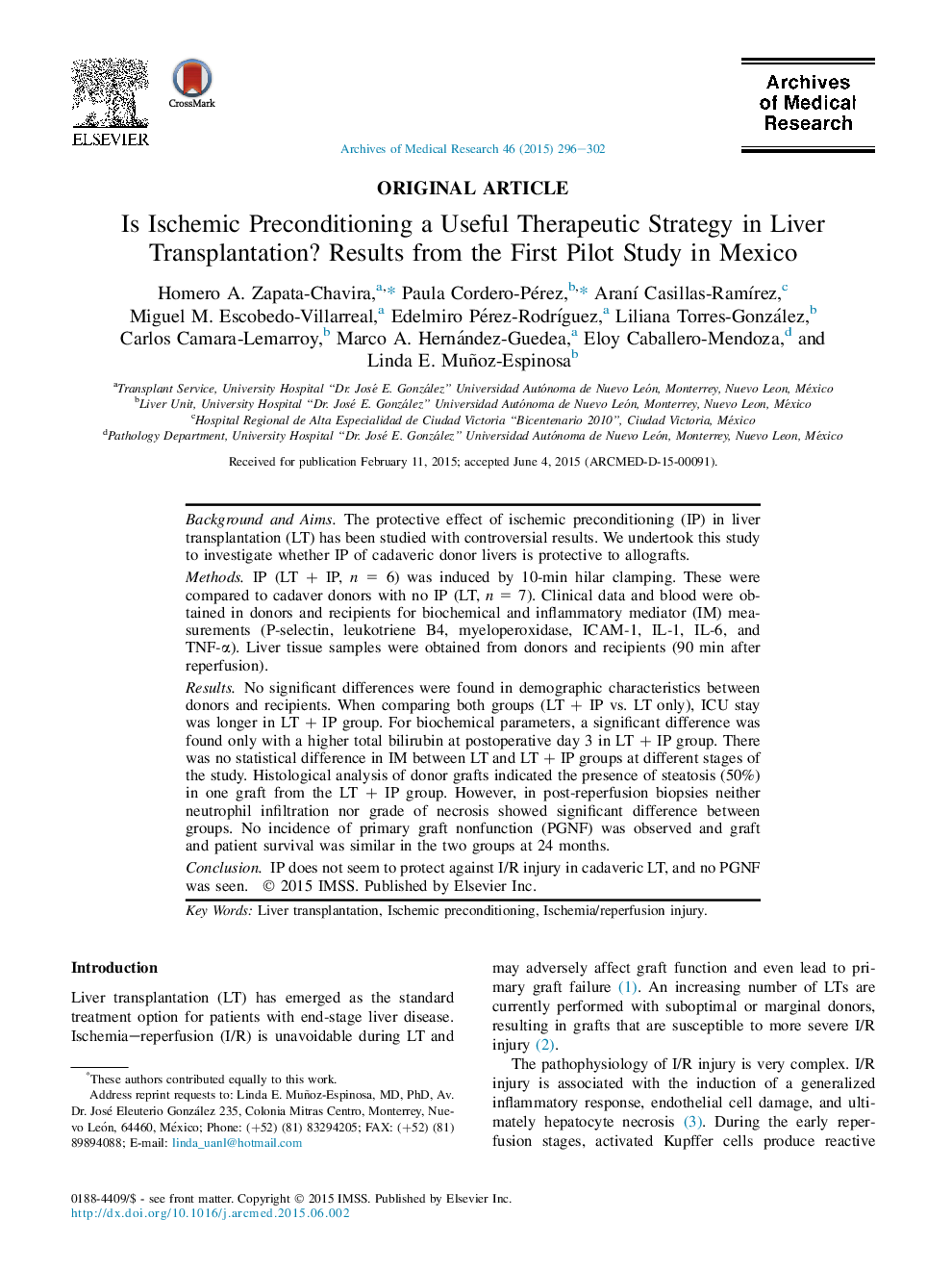| Article ID | Journal | Published Year | Pages | File Type |
|---|---|---|---|---|
| 3446356 | Archives of Medical Research | 2015 | 7 Pages |
Background and AimsThe protective effect of ischemic preconditioning (IP) in liver transplantation (LT) has been studied with controversial results. We undertook this study to investigate whether IP of cadaveric donor livers is protective to allografts.MethodsIP (LT + IP, n = 6) was induced by 10-min hilar clamping. These were compared to cadaver donors with no IP (LT, n = 7). Clinical data and blood were obtained in donors and recipients for biochemical and inflammatory mediator (IM) measurements (P-selectin, leukotriene B4, myeloperoxidase, ICAM-1, IL-1, IL-6, and TNF-α). Liver tissue samples were obtained from donors and recipients (90 min after reperfusion).ResultsNo significant differences were found in demographic characteristics between donors and recipients. When comparing both groups (LT + IP vs. LT only), ICU stay was longer in LT + IP group. For biochemical parameters, a significant difference was found only with a higher total bilirubin at postoperative day 3 in LT + IP group. There was no statistical difference in IM between LT and LT + IP groups at different stages of the study. Histological analysis of donor grafts indicated the presence of steatosis (50%) in one graft from the LT + IP group. However, in post-reperfusion biopsies neither neutrophil infiltration nor grade of necrosis showed significant difference between groups. No incidence of primary graft nonfunction (PGNF) was observed and graft and patient survival was similar in the two groups at 24 months.ConclusionIP does not seem to protect against I/R injury in cadaveric LT, and no PGNF was seen.
